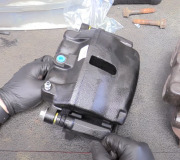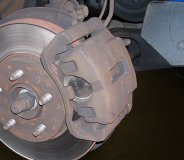Friday, April 3rd, 2009 AT 4:30 PM
When the car warms up the front brakes will sometimes apply on their own. Meaning, they squeeze on the rotor and I end up driving against the brakes. Ive replace one of the calipers, the pads have been replaced 4 times in a year, as well as rotors. If I stop and shut the car off, then restart, the brakes are so tight, I cant drpress the pedal or move the car, its locked up? I am going to replace hoses to the caliper and both calipers, but other than this, I have no idea. Someone mention something about vacuume? Any suggestions would be awsome. Thanks



